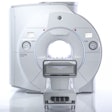Cancer centers that take a "wait and see" approach to adopting new technology run the risk of losing ground in their markets, according to a series of articles in the latest Oncology Issues. Instead, the authors say, centers should keep in mind that new acquisitions are rarely approved overnight, so getting a head start can make all the difference.
"Truly new technologies present cancer programs with challenging choices about which technologies to acquire or invest in…costly innovations, such as MRI (and) PET scanning…provoke a (complicated) decision-making process," wrote Dr. Richard Reiling in his introduction. Reiling is the medical director of Presbyterian Cancer Center in Charlotte, NC (Oncology Issues, May/June 2004).
Four facilities -- a multihospital system, two community cancer centers, and one physician practice -- offered their experiences with new technology buys, using a two-tiered decision-making process. The first tier looked at how the new technology will affect patient care; the second tier evaluated the business of expansion, including costs and reimbursement.
At Lehigh Valley Hospital and Health Network in Allentown, PA, going through their technology assessment committee (TAC) resulted in the cancer center receiving approval for the following investments starting in 2003 and into 2005: two additional linear accelerators, a radiation oncology information system, gamma knife technology, and a multidisciplinary lung cancer clinic.
The TAC system required that cancer services first show the clinical need for the equipment, explained lead author Jon Larrabee and colleagues. Once it passed muster with a senior management council, it was vetted by a network coordinating group (NCG), which greenlighted a business proposal. After the proposals were accepted and the equipment integrated into the center, a review process was undertaken to ensure that the expense was worthwhile.
"What is impressive about this (TAC) process is that it puts everyone on a level playing field so that everyone has an opportunity to propose…ideas in a fair and structured fashion," wrote Larrabee, who is Lehigh's strategic senior planner. However, he warned, the review process was so lengthy that sponsors of a new proposal may have to sit tight until the next fiscal year.
The NorthEast Medical Center in Concord, NC, managed to speed up its new technology approval process by creating a new clinical programs and services committee. As a result, the center added IMRT services and bought a PET scanner in a matter of months, explained Lynn Erdman, vice president of women's and cancer services at the facility.
The committee consisted of a cross-section of multiple disciplines at the hospital, including primary care, specialists, and marketing staff. Committee members reviewed all proposals and could authorize new acquisitions under $250,000.
Integrating IMRT and PET so quickly gave NorthEast an edge over other cancer centers in its area, Erdman said, especially for the treatment of head and neck and prostate cancer.
To the west of NorthEast, an independent clinic in Arkansas also kept an eye on what its competition offered, but put more emphasis on the financial return of adopting new technology. Highlands Oncology Group took eight to 12 weeks to buy a CT scanner to go along with its PET scanner, wrote Shawna Jarrett, the group's financial advisor. An ad hoc committee at the clinic performed feasibility research on the cost of the technology, the expected revenue, the need for it, patient demographics, and reimbursement rates.
In addition to making allowances for initial expenses (such as remodeling money for the clinic to accommodate the new equipment), the group anticipated how long it would take to recoup its investment. Jarrett reported that the PET scanner was covering its costs five months after installation and was turning a profit after a year. For the CT scanner, monthly income exceeded expenses after three months and required two years for a return on the investment.
Highlands Oncology is small enough to conduct the evaluation of new technology on a case-by-case basis, without setting aside a special budget, Jarrett said. This provided the opportunity to buy new technology almost as soon as it became available -- a big advantage given the rapid pace at which technology advances.
Presbyterian Cancer Center in Charlotte also scored new IMRT and PET/CT equipment inside of three months. One key to its new technology acquisition was to include input from a spectrum of specialties.
"While technology that impact cancer, such as advances in radiology and diagnostic imaging, do not necessarily fall under the cancer program, the oncology service line would actively participate in obtaining the new piece of equipment," wrote Barbara LiPira, executive director of oncology services.
Rather than a once-a-year submission blowout, proposals for new technology were sent constantly to the hospital's strategic planning and business development department. Accepted proposals under $500,000 were reviewed and approved by senior administration. LiPira described the in-house new acquisition process as "rather fluid, due to the available resources and expertise of the (department)."
However, outside forces were less cooperative. North Carolina requires a facility to provide a certificate of need (CON) and gain a blessing from the state. Presbyterian's first CON in 2002 was turned down because of marketplace competition. The group reapplied and received approval in early 2004.
It's particularly important for physicians to be involved in the acquisition process so they can see what goes into it, including potential roadblocks thrown up by regulatory entities, LiPira said. Reiling echoed that sentiment, emphasizing that "a team approach" to decision-making would guarantee that healthcare specialists from different disciplines have input.
By Shalmali Pal
Auntminnie.com staff writer
July 7, 2004
Related Reading
High-tech rad therapy hospitals face lower reimbursement, May 25, 2004
Parsing PACS components can lower the price, May 22, 2004
Cancer centers implement latest techniques for breast care, May 13, 2004
Study uncovers unexpected costs of PACS adoption, May 4, 2004
Part I: An insider’s guide to buying a used MRI -- acquisition, September 22, 2003
Copyright © 2004 AuntMinnie.com







